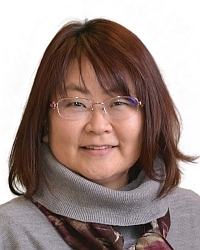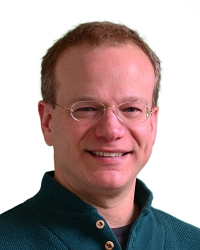TR2022-014
(2.5+1)D Spatio-Temporal Scene Graphs for Video Question Answering
-
- , "(2.5+1)D Spatio-Temporal Scene Graphs for Video Question Answering", AAAI Conference on Artificial Intelligence, DOI: 10.1609/aaai.v36i1.19922, February 2022, pp. 444-453.BibTeX TR2022-014 PDF Video Presentation
- @inproceedings{Cherian2022feb,
- author = {Cherian, Anoop and Hori, Chiori and Marks, Tim K. and {Le Roux}, Jonathan},
- title = {{(2.5+1)D Spatio-Temporal Scene Graphs for Video Question Answering}},
- booktitle = {Proceedings of the AAAI Conference on Artificial Intelligence},
- year = 2022,
- pages = {444--453},
- month = feb,
- doi = {10.1609/aaai.v36i1.19922},
- url = {https://www.merl.com/publications/TR2022-014}
- }
- , "(2.5+1)D Spatio-Temporal Scene Graphs for Video Question Answering", AAAI Conference on Artificial Intelligence, DOI: 10.1609/aaai.v36i1.19922, February 2022, pp. 444-453.
-
MERL Contacts:
-
Research Areas:
Artificial Intelligence, Computer Vision, Machine Learning, Speech & Audio
Abstract:
Spatio-temporal scene-graph approaches to video-based reasoning tasks such as video question-answering (QA) typically construct such graphs for every video frame. Such approaches often ignore the fact that videos are essentially sequences of 2D “views” of events happening in a 3D space, and that the semantics of the 3D scene can thus be carried over from frame to frame. Leveraging this insight, we propose a (2.5+1)D scene graph representation to better capture the spatio-temporal information flows inside the videos. Specifically, we first create a 2.5D (pseudo-3D) scene graph by transforming every 2D frame to have an inferred 3D structure using an off-the-shelf 2D-to-3D transformation module, following which we register the video frames into a shared (2.5+1)D spatio-temporal space and ground each 2D scene graph within it. Such a (2.5+1)D graph is then segregated into a static sub-graph and a dynamic sub-graph, corresponding to whether the objects within them usually move in the world. The nodes in the dynamic graph are enriched with motion features capturing their interactions with other graph nodes. Next, for the video QA task, we present a novel transformer-based reasoning pipeline that embeds the (2.5+1)D graph into a spatio-temporal hierarchical latent space, where the sub-graphs and their interactions are captured at varied granularity. To demonstrate the effectiveness of our approach, we present experiments on the AVSD and NExT-QA datasets. Our results show that our proposed (2.5+1)D representation leads to faster training and inference, while our hierarchical model showcases superior performance on the video QA task versus the state of the art.
Related News & Events
-
NEWS MERL work on scene-aware interaction featured in IEEE Spectrum Date: March 1, 2022
MERL Contacts: Anoop Cherian; Chiori Hori; Jonathan Le Roux; Tim K. Marks; Anthony Vetro
Research Areas: Artificial Intelligence, Computer Vision, Machine Learning, Speech & AudioBrief- MERL's research on scene-aware interaction was recently featured in an IEEE Spectrum article. The article, titled "At Last, A Self-Driving Car That Can Explain Itself" and authored by MERL Senior Principal Research Scientist Chiori Hori and MERL Director Anthony Vetro, gives an overview of MERL's efforts towards developing a system that can analyze multimodal sensing information for highly natural and intuitive interaction with humans through context-dependent generation of natural language. The technology recognizes contextual objects and events based on multimodal sensing information, such as images and video captured with cameras, audio information recorded with microphones, and localization information measured with LiDAR.
Scene-Aware Interaction for car navigation, one target application that the article focuses on, will provide drivers with intuitive route guidance. Scene-Aware Interaction technology is expected to have wide applicability, including human-machine interfaces for in-vehicle infotainment, interaction with service robots in building and factory automation systems, systems that monitor the health and well-being of people, surveillance systems that interpret complex scenes for humans and encourage social distancing, support for touchless operation of equipment in public areas, and much more. MERL's Scene-Aware Interaction Technology had previously been featured in a Mitsubishi Electric Corporation Press Release.
IEEE Spectrum is the flagship magazine and website of the IEEE, the world’s largest professional organization devoted to engineering and the applied sciences. IEEE Spectrum has a circulation of over 400,000 engineers worldwide, making it one of the leading science and engineering magazines.
- MERL's research on scene-aware interaction was recently featured in an IEEE Spectrum article. The article, titled "At Last, A Self-Driving Car That Can Explain Itself" and authored by MERL Senior Principal Research Scientist Chiori Hori and MERL Director Anthony Vetro, gives an overview of MERL's efforts towards developing a system that can analyze multimodal sensing information for highly natural and intuitive interaction with humans through context-dependent generation of natural language. The technology recognizes contextual objects and events based on multimodal sensing information, such as images and video captured with cameras, audio information recorded with microphones, and localization information measured with LiDAR.



